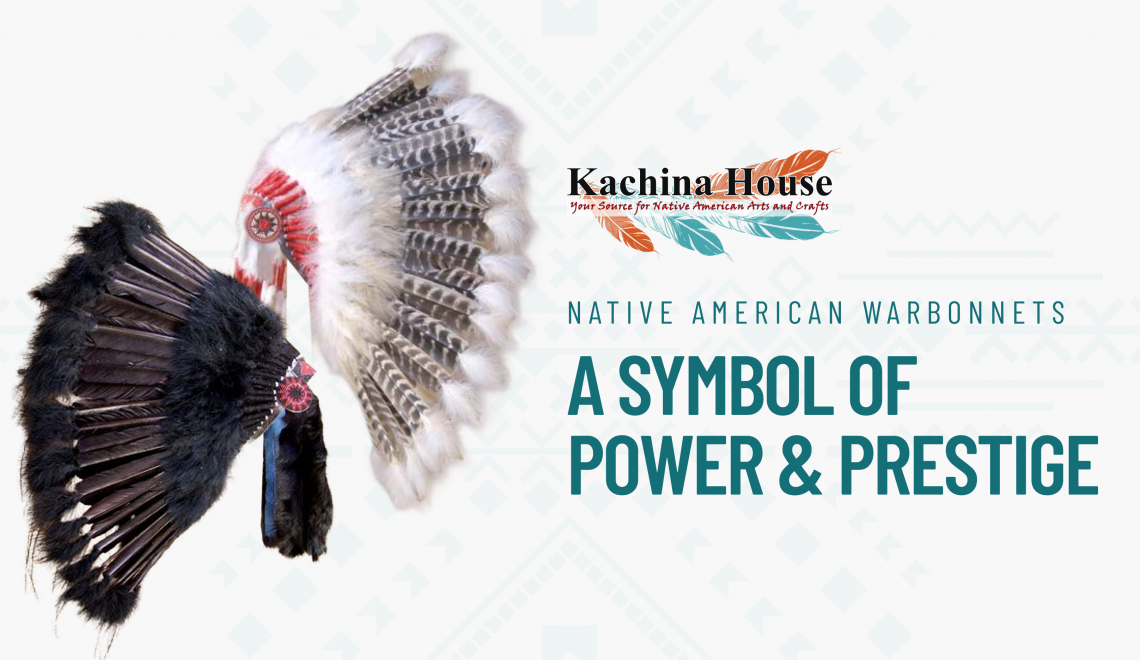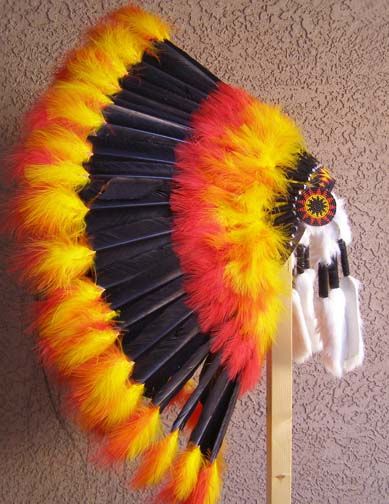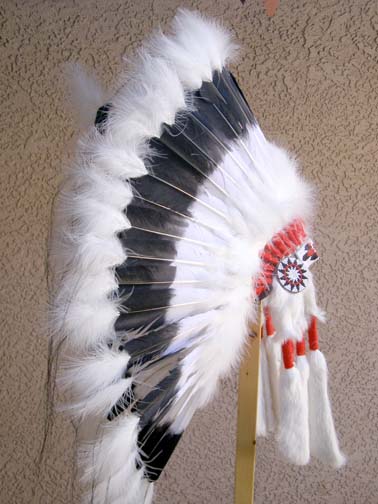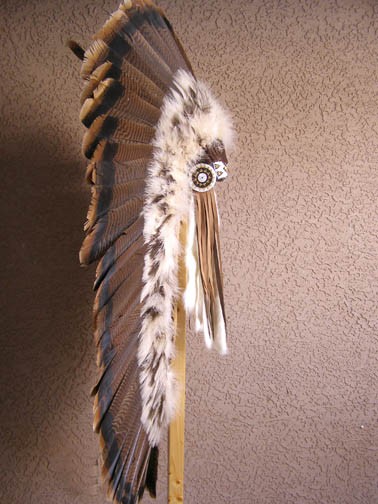
If you’ve ever seen a Native American warbonnet, you surely noticed its impressive presence. The long feathers, the detailed beadwork, and the careful arrangement of each part are impossible to ignore. But this isn’t just a beautiful piece of regalia. Warbonnets hold significant meaning and represent generations of tradition, leadership, and earned respect.
In this post, you’ll learn more about the purpose behind Native American warbonnets, how they were earned, and why they matter so much even today.
What Did a Warbonnet Symbolize?
Warbonnets were not created for decoration or fashion. In many Plains tribes, such as the Lakota, Cheyenne, and Crow, the represented honor, spiritual strength, and personal achievement. Only those who had earned a highly respected place within the tribe were allowed to wear this type of headdress.
These feathered headdresses were most often made using eagle feathers, which represented the highest form of respect that could be given to a Native American warrior. Each feather had to be earned through a personal act of bravery, sacrifice, or service to the tribe.
Generally, warbonnets were worn by warriors and leaders who had shown bravery, guided their people through hard times, or taken part in important ceremonies. Beyond that, the headdress served as a connection to ancestors, nature, and sacred forces.
How Were Feathers for a Warbonnet Earned?
The feathers in a Native American warbonnet weren’t just added for appearance. Each one was earned through a meaningful act, and every feather had a story behind it. In many Plains tribes, men had to prove themselves before receiving even a single eagle feather. Acts of bravery were one of the most common reasons a feather was awarded.
If someone protected the tribe in battle, rescued another person, or completed a dangerous mission with courage, that individual might return home and be honored by the elders. This wasn’t limited to warfare; feathers were also given for leadership, healing, or guiding the community during difficult times.
Some feathers were even marked with colors or slight cuts to reflect the kind of act that earned them. For example, a red feather or a red dot on a feather might mean the wearer was injured while protecting someone else. Other feathers might have notches or small cuts near the tip, which could represent close encounters or moments when a warrior came face-to-face with an enemy.
In some tribes, a feather with a black mark might signify a kill, while one tipped with yellow could suggest extraordinary bravery or leadership during a mission. These visual details helped tell a fuller story of the person’s experiences, so that anyone who saw the warbonnet would understand what each feather stood for.
Types of Warbonnets and Their Design
While all warbonnets carried significance, a few distinct styles stood out. One type was the “halo” warbonnet, which fanned the feathers around the head in a circular pattern. Another style was called the “straight-up” warbonnet, where the feathers rose tall and vertical. Then there was the “trailer” warbonnet, which extended down the back in long rows that sometimes reached the ground.
No matter the shape, these warbonnets weren’t used in everyday life. They were reserved for special occasions like ceremonies, councils, dances, and moments when the tribe needed to come together. When someone appeared wearing one, it meant something serious was happening and people would pay attention.
The Spiritual and Symbolic Weight of Eagle Feathers
Eagle feathers carry powerful spiritual meaning in many Native American traditions. The eagle is believed to fly closest to the Creator, acting as a messenger between the physical and spiritual worlds. Thus, receiving an eagle feather is one of the highest honors a person can earn. It reflects bravery, leadership, or a meaningful act of service.
Each feather is treated with deep respect. A warrior might only receive a few in his lifetime, and those are used with purpose, often in ceremonies or as part of a warbonnet. These feathers represent a spiritual path, not just personal achievement.
Final Thoughts
Even though fewer warbonnets are worn today, their meaning hasn’t faded. They are still used in cultural celebrations, powwows, and spiritual gatherings. They still mark moments of transformation and respect. And they still represent the highest form of acknowledgment someone can receive from their tribe.
So if you come across a warbonnet in a museum, in a photograph, or person, take a moment to pause. You’re not just looking at feathers. You’re seeing the memory of a person who chose strength, sacrifice, or service when it mattered most.
At Kachina House, you can explore a thoughtfully curated collection of Native American headdresses, crafted with cultural understanding and care. Each headdress reflects traditions and offers a meaningful way to learn about and honor this important part of Native heritage.




